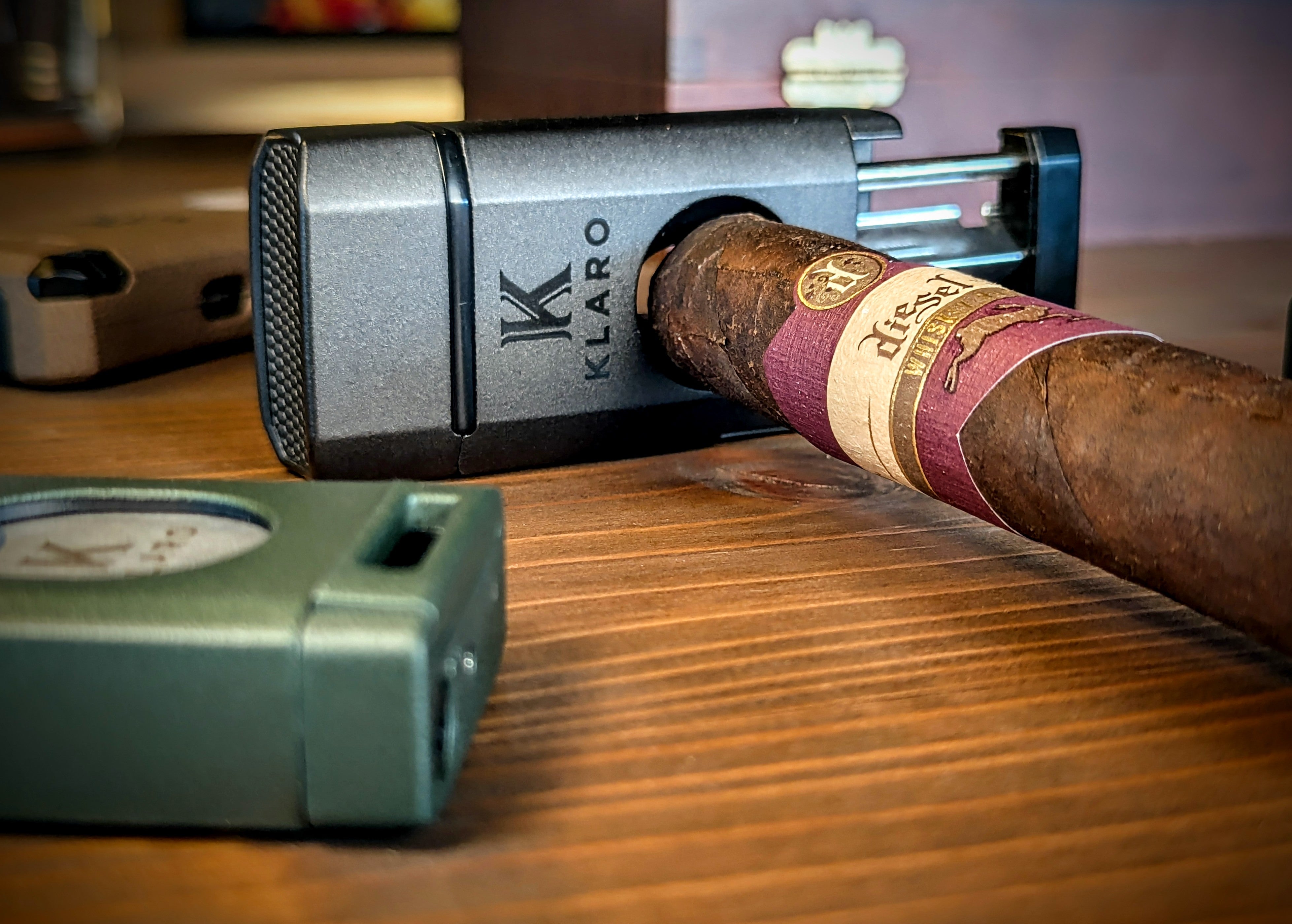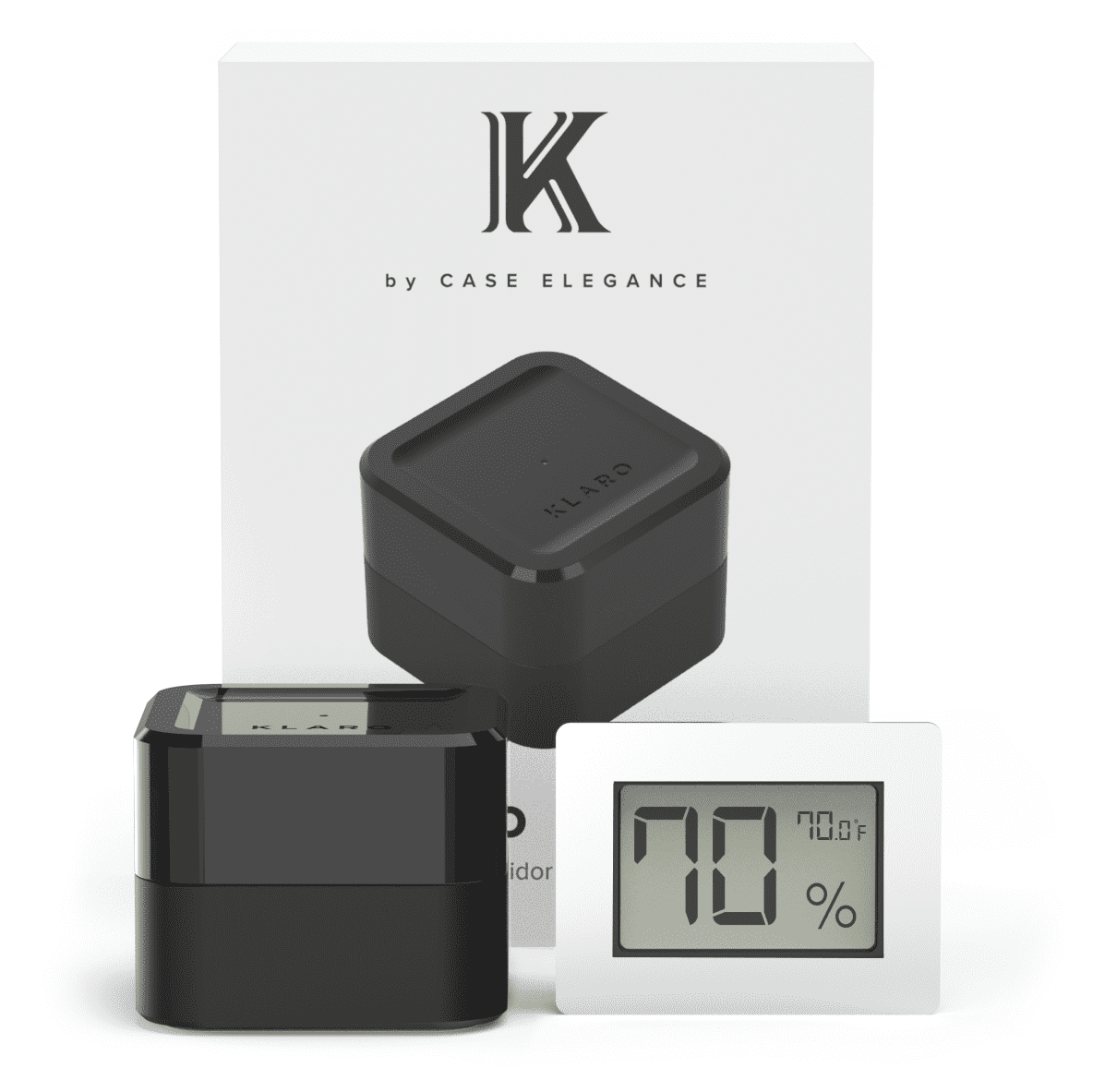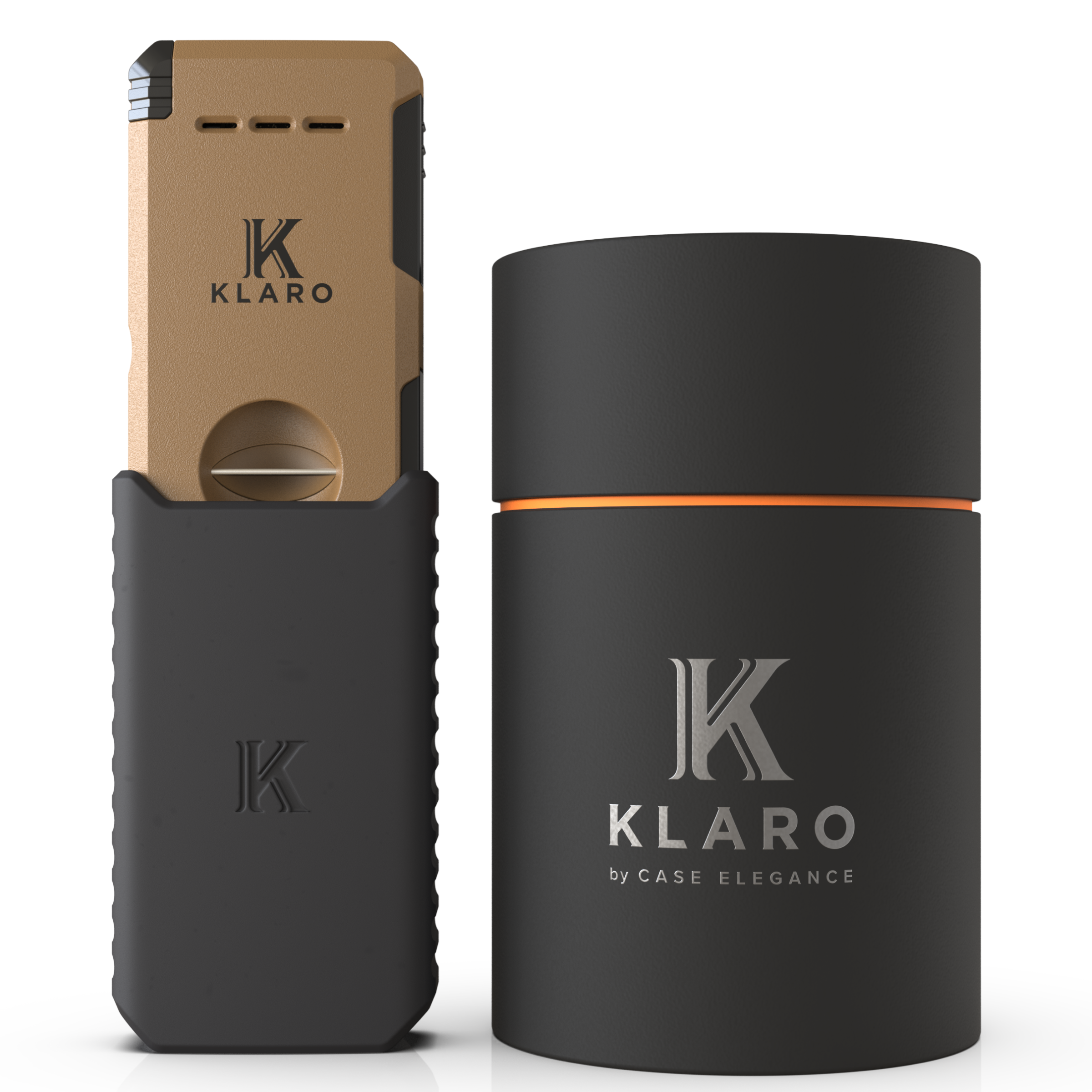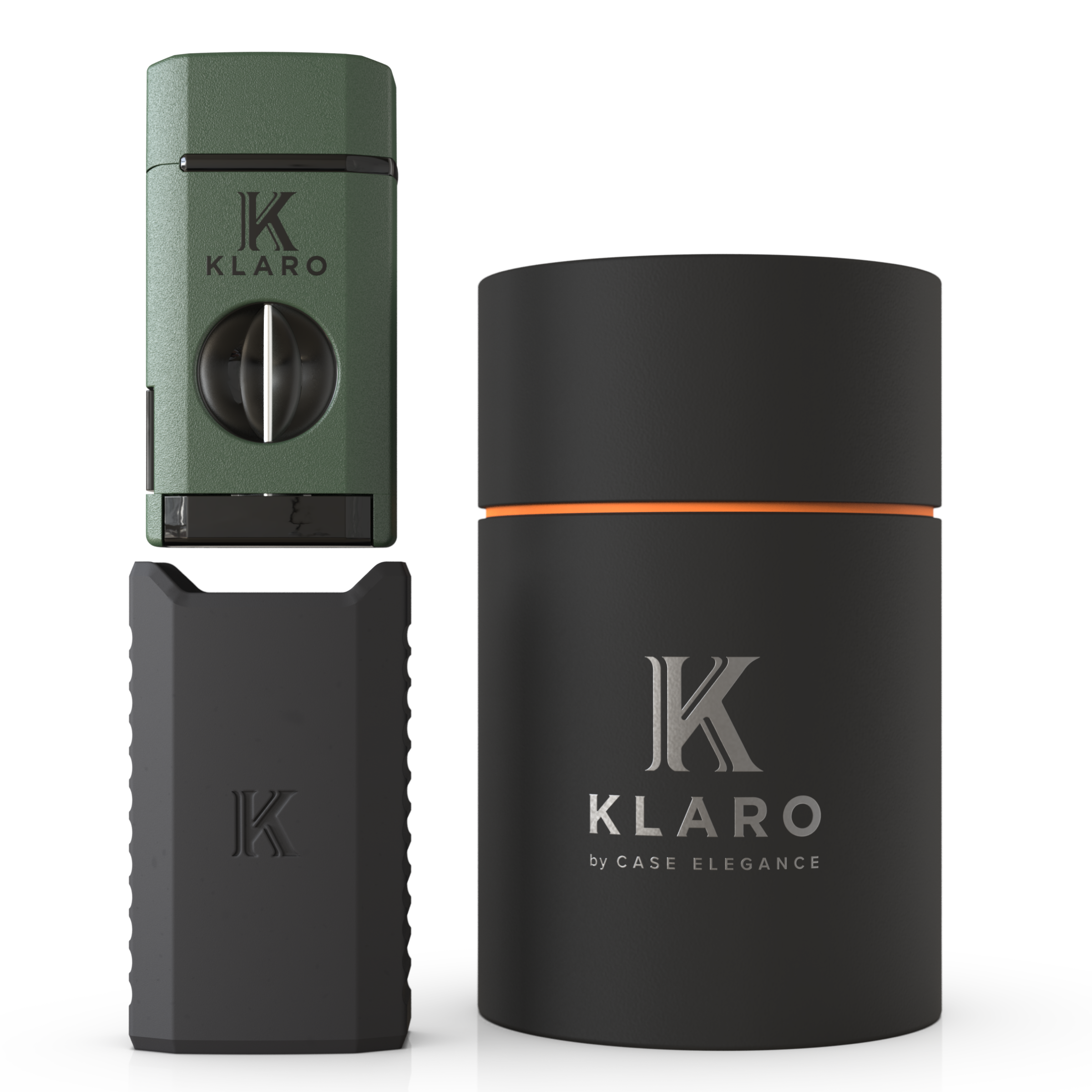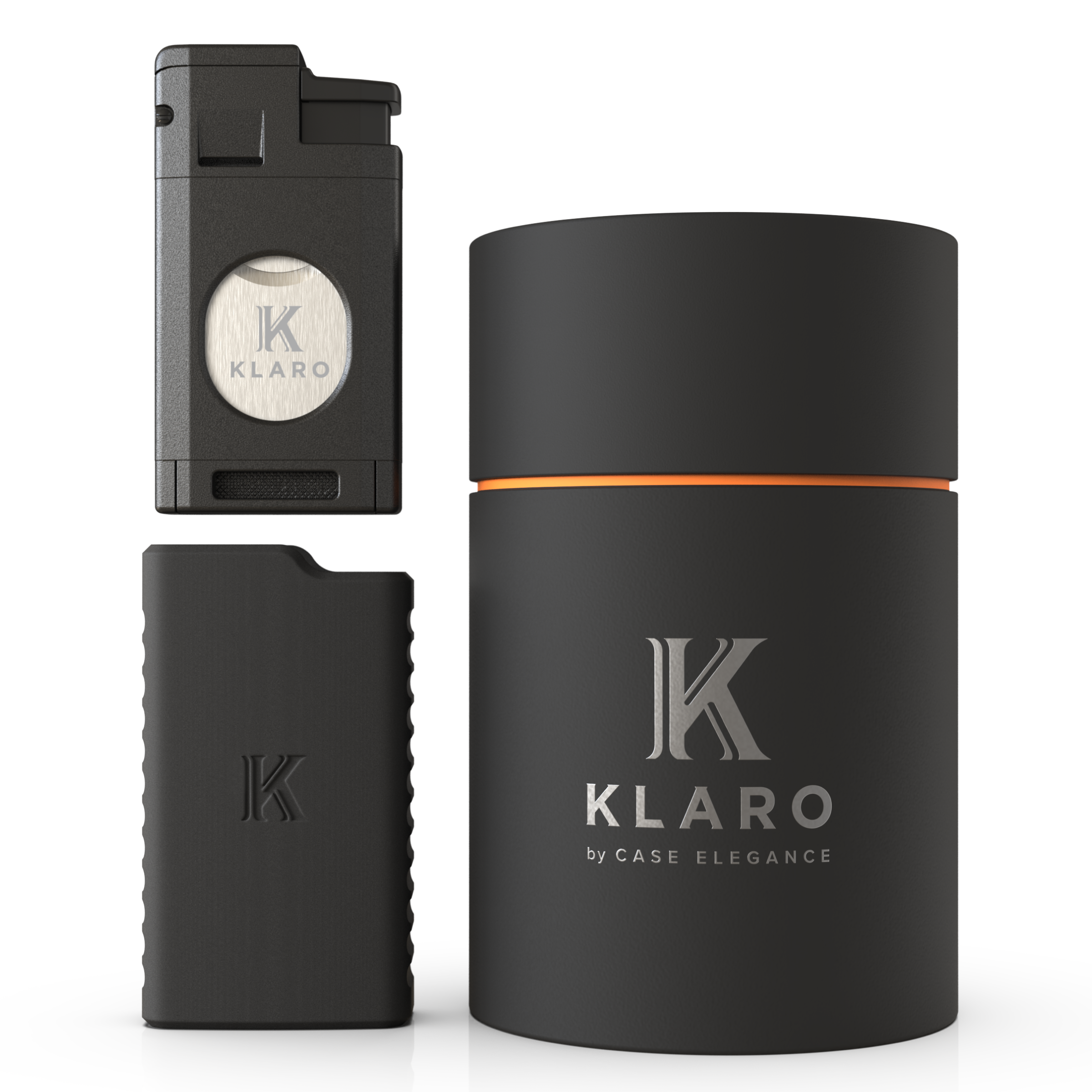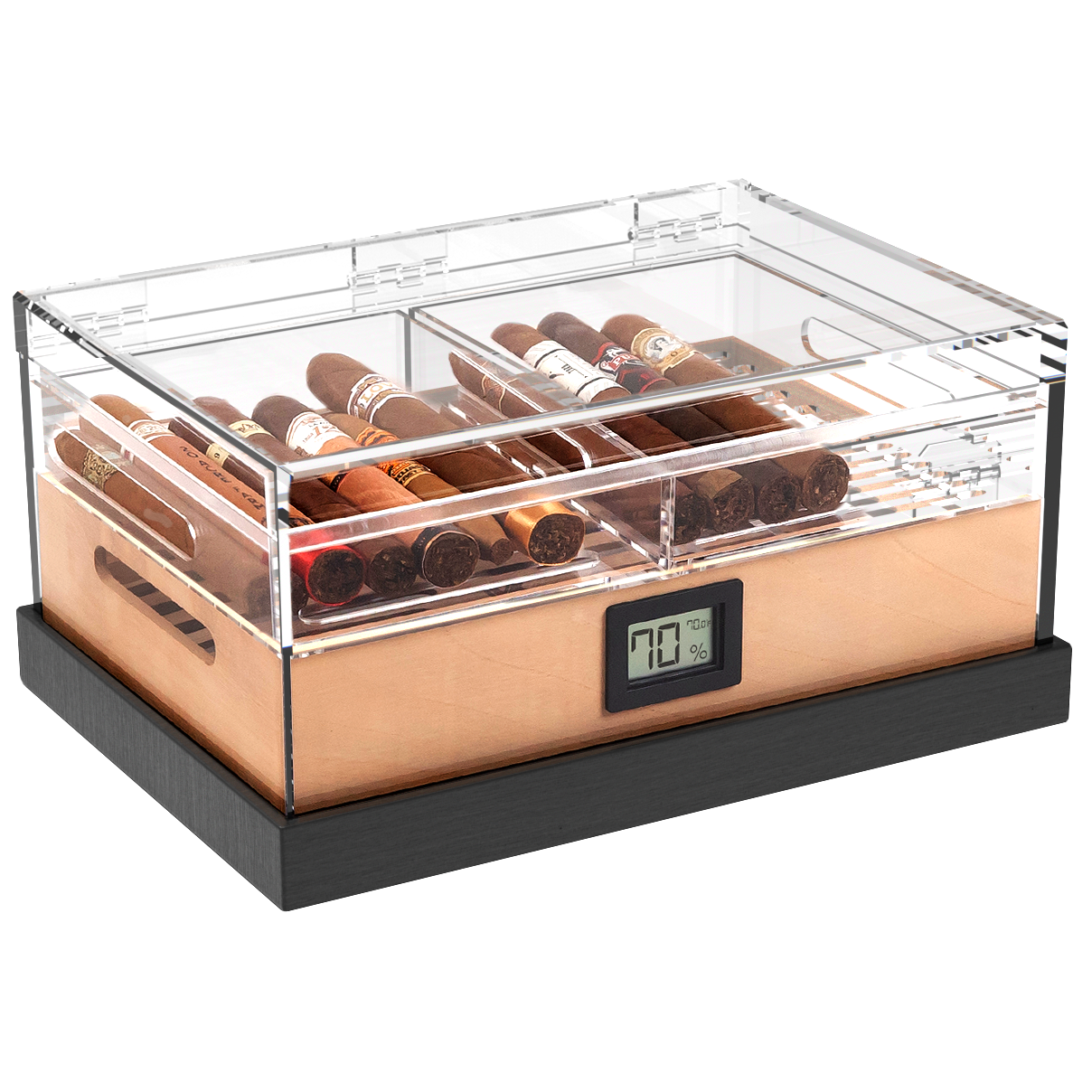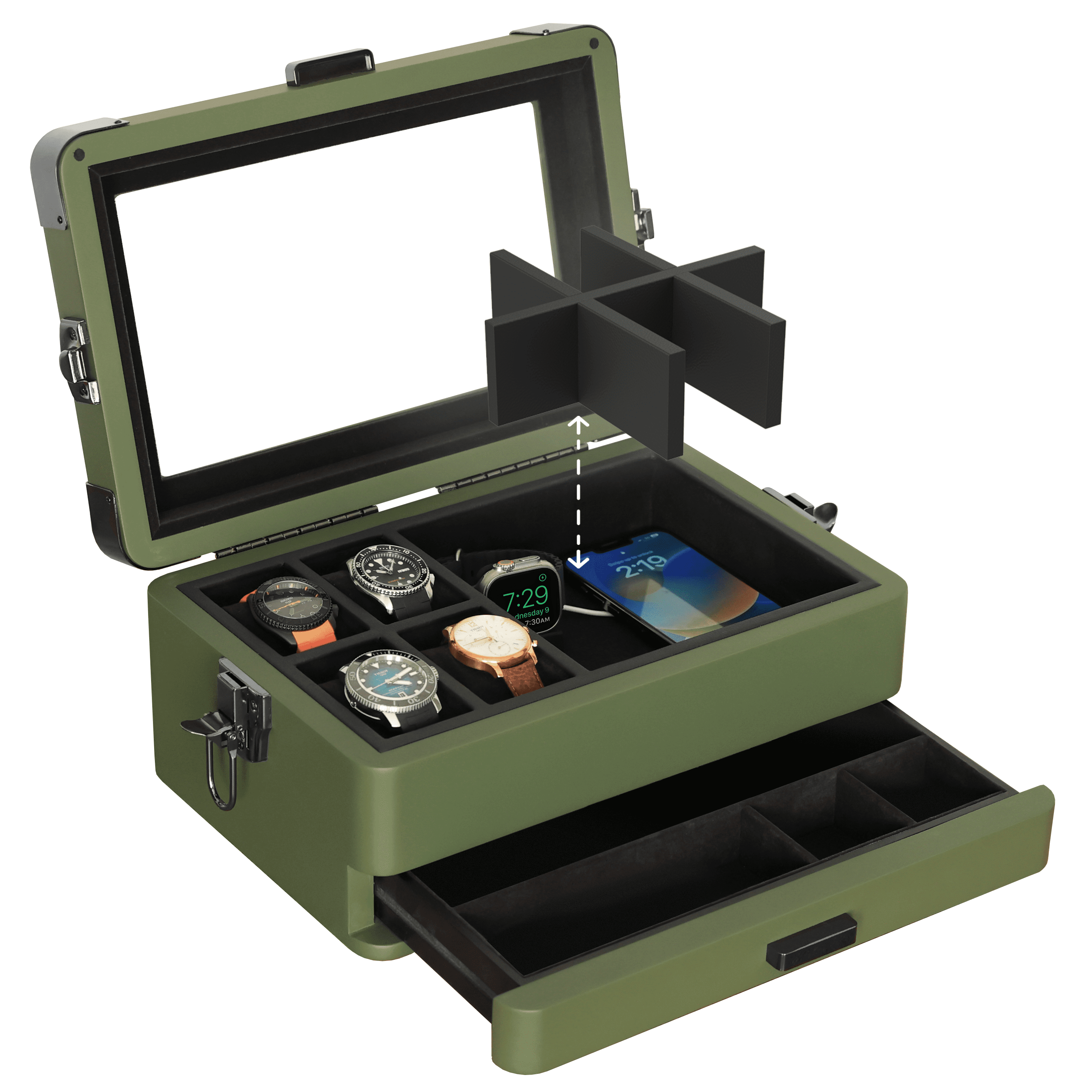Humidification distinguishes a humidor from any other container where you might store your cigars. Otherwise, a desk drawer would suffice. But because the tobaccos in cigars are more nuanced, organic, and don’t experience as much processing as other tobaccos, maintaining proper humidity levels is key to protecting them and ensuring a good smoke.
You might get lectured on creating the same humidification and temperature in your humidor as the tobacco barns in the Cuban and Dominican geographies where they craft premium cigars. But the purpose is less pretentious than that.
Creating the right, consistent humidification in your humidor prevents your cigars from drying out, cracking, or losing their flavor. But too much humidification and you risk mold and unwanted excess smoke. Cigars are hygroscopic, absorbing water easily. This means a lot rests on your humidifier to create a goldilocks zone for your cigars. So just how do they do that?
Components of a Humidor
Below are the primary components most humidors include, though the variety of humidor types include additions and subtractions to this list. But since the rise in popularity of cigars at the turn of the 20th century in America, the industry has standardized some foolproof design elements of the humidor.
Hygrometer
A hygrometer is a unique device that measures the relative humidity of an enclosed space, like the inside of a humidor. Hygrometers measure the dew point in the air to detect how close the air is to condensation. For cigar aficionados, the hygrometer’s reading and accuracy is crucial for the humidor.
You can find both analog and digital hygrometers in humidors. Analog hygrometers use a more antiquated technology but are accurate nonetheless. And you will also find humidors without a hygrometer–like travel humidors or jar humidors–but here you are flying blind without a hygrometer to read the humidity levels.
Humidifier
Defining the humidifier in a humidor is more difficult because there are multiple versions. But, in purpose, the humidifier controls the humidity levels by acting as the source and receptor of hydration.
When there is a low amount of humidity in the air, the humidifier releases moisture. When humidity is high, it absorbs moisture to lower the relative humidity. Often, water or a propylene glycol solution is used as the humidifier’s source of hydration.
Material
Similar to the humidifier, the materials that make up the inside of your humidor should absorb and release humidity as required. And nothing is better for this in humidors than Spanish cedar. Of course, there are other types of wood you can use for a humidor, but Spanish cedar is best for absorbing and releasing moisture without the risk of rot or mold.
Lid
The key to humidors is containing the moisture in the air–and the more outside air that’s exposed, the harder it is for a humidor to control the humidification levels.
Two things affect outside exposure the most: a proper seal, and opening the humidor too often. The lid ensures a proper seal that doesn’t let outside air in or out. But that won’t help if it’s opened frequently. Consider a glass top humidor which will surprisingly reduce how often the humidor is opened.
Types of Humidor Humidifiers
The humidifier plays a critical role with all other humidor components by acting as the source and regulating moisture. How your humidor does this depends on the type. Here we’ll look at the various types of humidifiers most common in humidors.
Floral Foam
Floral foam, often known as Oasis foam, is often used as the humidifier in humidors, and the material is excellent for absorbing a high amount of moisture. These are often encased in a plastic container with ventilation to allow the moisture to flow. You will need to add moisture to floral foam once every 1-2 weeks and you should replace the foam itself every 6-12 months.
Crystal Gels
Crystal gels can absorb and release moisture easily. These come in a jar container and, to use, you pour water over the gels so they absorb them and expand. When placed in a humidor they will release or absorb moisture as needed. They release a high amount of moisture, so it’s imperative you monitor your humidity levels with a good hygrometer. But you only have to add water or solution to these once every 2-4 weeks and replace them every year or two.
Silica Beads
You’ve likely seen a packet of silica beads included in packaged goods–especially international items. And that’s because they can adsorb and release moisture. Note, adsorption means the water molecules collect on the surface of the bead as opposed to being absorbed into the bead. These are durable and can last 3-6 years with refills occurring once every month or so.
Humidor Packs
Humidor packs help regulate humidity similar to beads or gels. They use a solution of salt and water contained within a pouch. The membrane that creates the pouch allows for humidity to be exposed or absorbed depending on the saline solution within. So you can buy humidor packs with a specific humidity in mind. Humidor packs need to be replaced every 2-3 months before the pack loses its water content and becomes brittle and hard.
Electronic Humidifiers
Electronic humidifiers are the most proactive in responding to dips in humidity levels. These electronically monitor humidity and will turn on, releasing moisture, whenever it dips too low, or beneath what you’ve set it at. While more expensive, you can have tighter control over specific levels. These will require refills depending on how active they are in adding moisture.
Hydro System
Klaro’s humidors use a unique humidifier known as the hydro system, which uses a hydro tray at the bottom of the humidor that exposes air to a propylene glycol and gel solution that will humidify the air. This also effectively prevents mold from setting in, and it will keep your humidor hydrated for several weeks–though winter months and dry locales will require more frequent refills.
What Should Humidor Humidity Be?
So if you have a proper working humidifier and hygrometer in a good-quality humidor, what are the ideal regulations for humidity? Well, opinions differ about the best humidity level. But there is some general guidance that will help ensure you keep your cigars in the best environment.
- Keep cigars stored as close to 70 degrees as possible. Lower temps will prevent the solution from evaporating and higher temps will quickly dry the humidor out, both of which can cause damage to your collection.
-
Winter months require diligent maintenance, frequently refill your humidifiers that require solution or water–like floral foam, crystal gels, or silica beads–and fill up your Hydro Tray to maintain proper humidity levels.
- Dry climates can greatly impact the humidor. If you live in a dry climate or in an area that experiences dryer seasons, fill the hydro tray often and monitor your hygrometer to know where your levels stand.
Get to know your humidor(s) and see what you learn by experimenting with humidifiers, but be careful to follow instructions based on the model you buy. Some hydration and humidification tools can harm or hurt your humidor by causing excess humidity and, eventually, mold.







